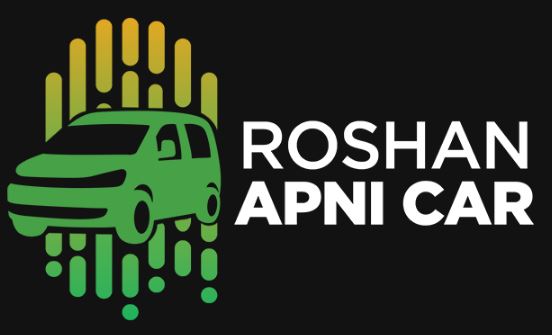Basic facts of Auto insurance in the USA
Basic facts of Auto insurance in the USA : Introduction Auto insurance is an essential part of owning a car in the United States because it protects drivers’ financial interests and provides them with peace of mind.
Understanding the subtleties of accident protection is fundamental for coming to informed conclusions about inclusion, charges, and lawful necessities. In this article, we will investigate the complexities of accident protection in the US, revealing insight into key factors that impact inclusion and expenses.
Legitimate Prerequisites
Most importantly, collision protection is a lawful prerequisite in pretty much every state in the US. Drivers are generally required to carry a minimum amount of liability insurance to cover bodily injuries and property damage that may result from a car accident, although specific regulations vary. State-by-state variations in the minimum coverage requirements highlight the significance of being familiar with local regulations.
Obligation Protection (Basic facts of Auto insurance in the USA)
Obligation insurance is the groundwork of accident protection contracts and ordinarily incorporates two primary parts: liability for bodily harm and damage to property. Substantial injury obligation covers clinical costs, restoration costs, and lawful expenses for the harmed party in case of a mishap where the guaranteed driver is to blame. Property harm risk, then again, covers the maintenance or substitution expenses of the other party’s vehicle or some other property harmed in the mishap.
While liability insurance covers damage to other people’s property, it does not cover damage to the insured driver’s vehicle. Numerous drivers settle on extra inclusion choices, for example, far-reaching and impact inclusion, to protect their own resources. Thorough inclusion safeguards against non-crash occasions like burglary, defacement, or cataclysmic events, while impact inclusion tends to harm coming about because of crashes with different vehicles or items.
Uninsured and Underinsured Driver Inclusion
Sadly, not all drivers out and about follow protection necessities, prompting possible complexities in case of a mishap. Uninsured and underinsured driver inclusion steps in to safeguard guaranteed drivers in circumstances where the to-blame party needs protection or has deficient inclusion. This extra inclusion guarantees that the protected driver isn’t left with the monetary weight of hospital expenses and vehicle repairs brought about by an uninsured or underinsured driver.
Factors Impacting Expenses
Collision protection charges can change based on a horde of variables. Back-up plans should think about the driver’s age, orientation, driving record, and the kind of vehicle being safeguarded. Moreover, the area of the guaranteed driver, including the state and, surprisingly, the postal district, assumes a huge part. Metropolitan regions frequently have higher charges because of expanded gridlock and a higher probability of mishaps.
Record as a consumer is one more variable that safety net providers consider while deciding charges. Drivers with a strong financial record might be qualified for lower expenses, as safety net providers view them as safer. This training, in any case, has been a subject of discussion, with some contending that it might excessively affect low-paying people.
Discounts and Bundling Insurance companies reward policyholders who drive safely, remain loyal, or complete defensive driving courses with various discounts. Normal limits incorporate safe driver limits, multi-strategy limits (for packaging accident coverage with different sorts of protection like home protection), and limits against burglary gadgets or wellbeing highlights in the guaranteed vehicle.
Innovation and Telematics
Headways in innovation have presented telematics, permitting back-up plans to follow the driving way of behaving and change charges likewise. Utilization-based protection (UBI) programs use gadgets or cell phone applications to screen driving propensities like speed, slowing down, and mileage. Conscientious drivers may find that safe driving has the advantage of lower premiums.
What variables influence the expense of vehicle protection ?
Your vehicle insurance payment can shift in view of a large number of the accompanying elements:
Location. How much you pay for car insurance can be affected by things like traffic congestion, crime rates, and the likelihood of being in an accident.
Age and long stretches of driving experience. Insurance agencies frequently consider your age and the number of years you’ve been in business to determine your risk level. Guarantors accept that drivers who are more established and have more insight into the driver’s seat are less inclined to be in a mishap, so they will quite often charge them lower insurance payments.
Gender. An insurance agency might utilize orientation to ascertain your charges. This is normal practice in view of measurements that show men are more hazardous drivers, which might result in them paying higher rates than ladies.
Make and model of the vehicle. Insurance rates can vary depending on the year, make, and model of your vehicle.
Driving Record may also take into consideration safety features and repair costs. Keeping a spotless driving record might bring about lower charges. To figure out how much you’ll pay for car insurance, insurance companies look at your driving record, including claims, accidents, and traffic violations.
Inclusion Determination. The inclusion you pick has an effect on your protection costs. Picking a more significant level of inclusion like thorough, clinical installments, rental vehicle repayment, or hole insurance will cost something other than choosing a responsibility contract.
There are numerous ways for drivers to save through limits presented by guarantors. Eventually, the most ideal way to track down a top notch that fits affordable enough for you—and a strategy that suits your necessities—is to search around and look at statements from numerous safety net providers.
How Much Does Car Insurance Cost?
According to sources and most recent analysis, the average annual cost for car insurance is $1,547, or about $127 per month.
Please note that car insurance premium rates are highly individualized and based on several considerations, so you could pay more or less than the average according to feasibility.
| COMPANY | AVERAGE MONTHLY RATE* | AVERAGE ANNUAL RATE* |
| 1. USAA | $85 | $1,022 |
| 2. American Family | $115 | $1,383 |
| 3. State Farm | $107 | $1,279 |
| 4. Geico | $104 | $1,250 |
| 4. Nationwide | $123 | $1,473 |
| 6. Farmers | $173 | $2,078 |
| 6. Travelers | $113 | $1,355 |
| 6. Allstate | $178 | $2,135 |
| 6. AAA | $163 | $1,958 |
| 10. Progressive | $128 | $1,540 |
Read more:
https://accountsgala.com/how-to-open-an-international-account-online-today-for-canada/
Conclusion :
Legal requirements, coverage options, and a myriad of other influencing factors shape auto insurance in the United States into a multifaceted and highly regulated industry. A thorough understanding of one’s requirements, local regulations, and the various coverage options is necessary to navigate this complicated landscape. As drivers endeavor to safeguard themselves and their resources, remaining informed about collision protection is a basic part of dependable vehicle proprietorship.







